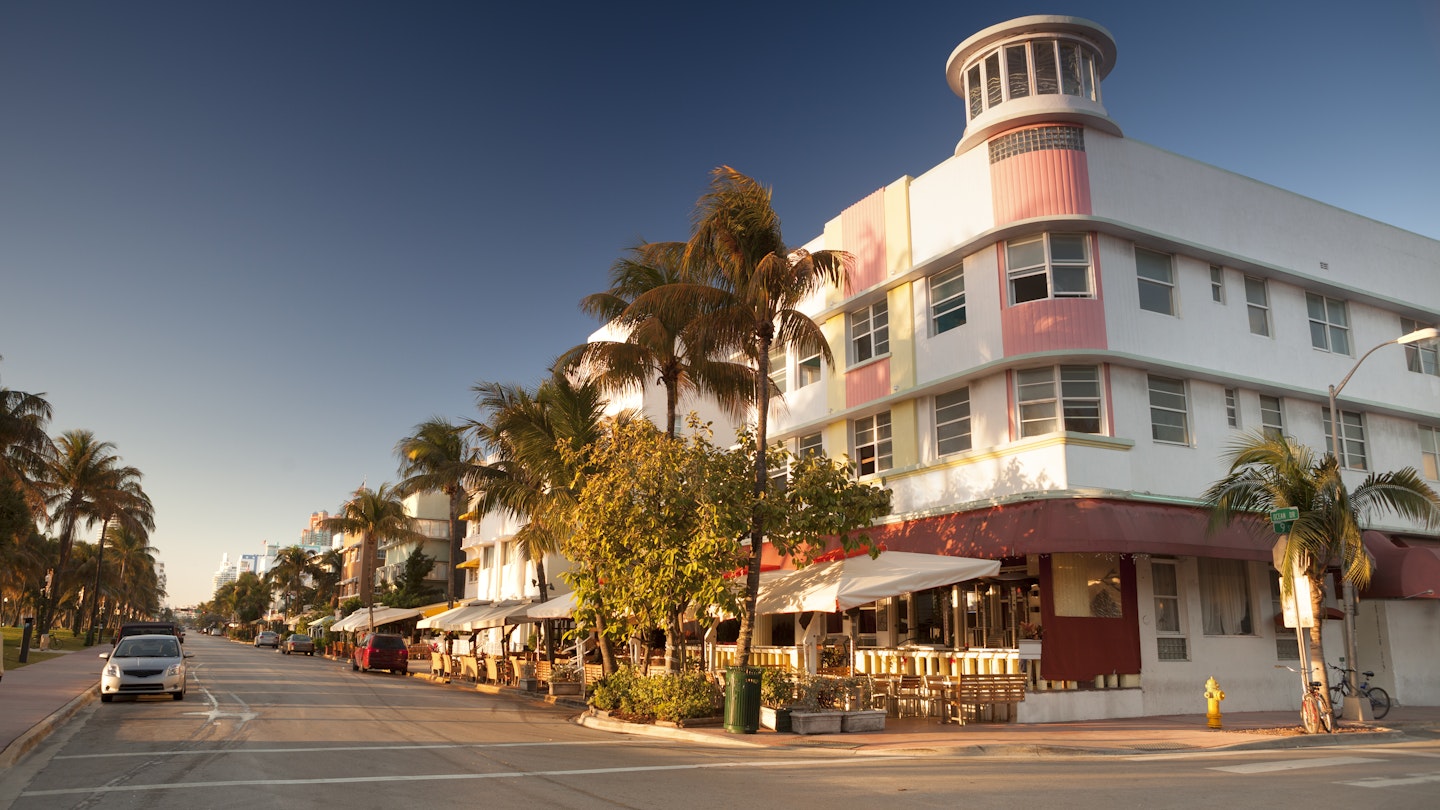LaToya has come to Miami’s South Beach district to celebrate her 21st birthday.
She’s dressed the part in a body-hugging chartreuse halter with matching wide-leg chinos, the curves of her body contrasted by pointy-toed stilettos in a vibrant lemon. Tight, tidy braids dyed to match her shoes sweep over her head, accentuating cheekbones that appear man-made. “You only turn 21 once, right?” LaToya tosses her head back and lets out a giddy laugh, revealing a petite diamond twinkling from an incisor.

South Beach, with its long, sunlit days and pristine public beach, seems to revel in a party mentality. LaToya and her girlfriends thought the small island’s vibe would provide the perfect backdrop for the celebration. And she’s right – that aspect of South Beach’s culture is always on display, drawing travelers since the turn of the 20th century.
“On show” is an apt descriptor of SoBe, as it’s known. At night, the pastels of historic Art Deco structures shift to a kaleidoscope of neon. Beach-facing venues compete to entice passing pedestrians. Tourists enjoy joyriding up and down the block in low-slung, door-less shuttles. South Beach feels akin to a Disneyland for attractive adults.
A ‘billion-dollar sandbar’
South Beach conjures images of a luxurious lifestyle. The year-round warmth, expansive beachfront, and absence of high rises create an unabashedly laid-back pace. However, while the locals might make it seem effortless, this miniature paradise has been hard-won.
A century ago, there was no beach at all, just mosquito-infested swampland. However, the nouveau riche recognized South Beach’s potential and envisioned it as a playground for the elite. Large single-family homes soon dominated the oceanfront, and wide boulevards were constructed for private vehicles. This feature was particularly ostentatious as most Americans at the time still used horse-drawn carriages; cars were deemed extravagant toys.
The Great Miami Hurricane of 1926, also referred to as “The Big Blow,” devastated most of these structures and uprooted miles of underutilized roads. Many South Beach residents were transplants and lacked knowledge of the devastation the sea could cause. Consequently, they were perilously ill-prepared, and so were the buildings they constructed.
The storm foreshadowed further challenges; three years later, the nation fell into the Great Depression. Just as quickly as the newly minted millionaires had arrived, many were soon lost. Magnificent residences were swept away, and bank accounts were drained.

Redesigned for the 99 percent
South Beach sought new patrons among the middle class, creating the SoBe we know today. Efforts to rebuild the area with a focus on affordability are evident in the emerging hotels. To reduce material costs, sand from the nearby beach was incorporated into concrete mixes. Most buildings were designed to be fewer than three stories tall, eliminating the need for costly elevators.
Today, visitors delight in observing these hotels’ façades cheek-to-cheek, with each displaying unique architectural details that reflect whether the structure is purely Art Deco, streamlined moderné, or MiMo (Miami Modern). This design layout yielded cost savings—only the narrow front of the building needed to be visually captivating—the remainder of the shoebox-shaped structure recedes from view, flanked by other properties. Thus, SoBe maintained its glamorous aura while becoming substantially more affordable.
A tour by the Miami Design Preservation League focusing on Art Deco is recommended for those interested in exploring South Beach’s architectural history.
Planners try to ‘wow’ while controlling costs
The designers and builders who developed South Beach employed various techniques to sustain its hard-won prestige. Sidewalks were painted red to evoke the feeling of walking on a metaphorical red carpet. Different architectural styles and embellishments were chosen for their sophistication and elegance. Mediterranean Revival was perceived as particularly luxurious, as it was associated with homes that only the wealthy could afford.
Built in 1925, one of the pioneering properties showcasing this style is El Paseo. Located just off the main drag of Ocean Boulevard, it features characteristic elements like tile roofs, rounded archways, and balconies adorned with striped awnings. With a briny breeze coming off the Atlantic, visitors might mistake Miami for the Côte d’Azur.
Another iconic example of Mediterranean Revival is the mansion of the late designer Gianni Versace. Today, the property operates as a luxury boutique hotel; many rooms have been preserved as Versace originally designed, showcasing intricate ceiling murals. The first floor hosts a fine dining Italian restaurant, aptly named Gianni’s.

Efforts to control costs while maintaining a “wow” factor continued within the hotels. Upon entering, the lobbies were kept modestly sized, allowing more space to be allocated for revenue-generating rooms. Higher-end properties, like Hotel Victor, strive to impress visitors with impressive double-height ceilings.
To enhance style and elegance, nearly all hotels built during the boom from 1935 to 1941 featured bespoke murals. Allegedly, around 300 of these murals were crafted by one individual; an entirely self-taught artist in his mid-20s named Earl LaPan. One of the finest examples of LaPan’s remaining works can be found adorning the lobby ceiling of Hotel Victor. His creations reinforce the sense of place and local history, incorporating South Florida’s diverse flora and fauna.
As one of the youngest major districts in the United States, South Beach has undergone several iterations, dramatically altering its landscape. Through a century of transformation, it has retained the essence of how various groups envisioned this iconic destination.





